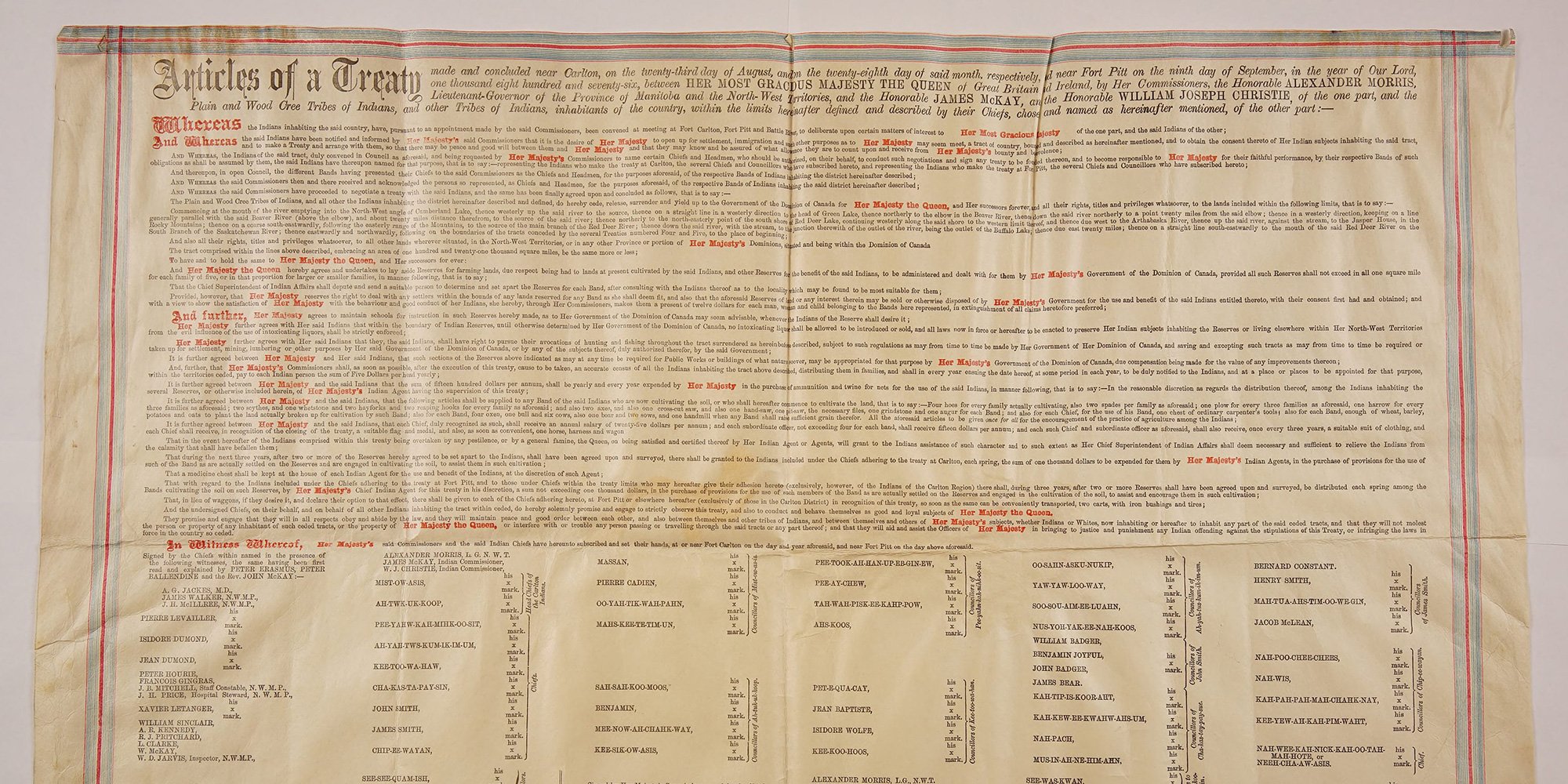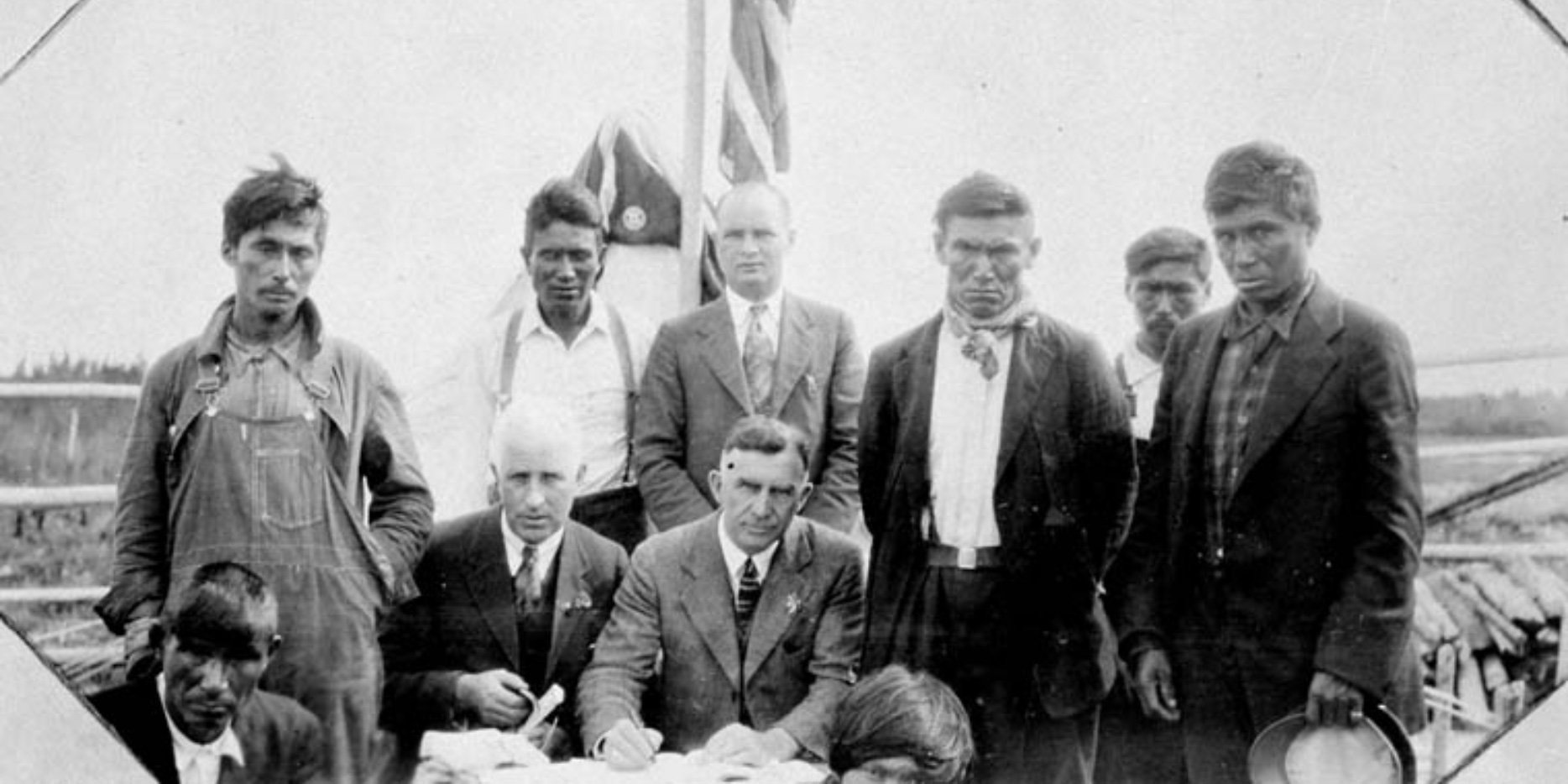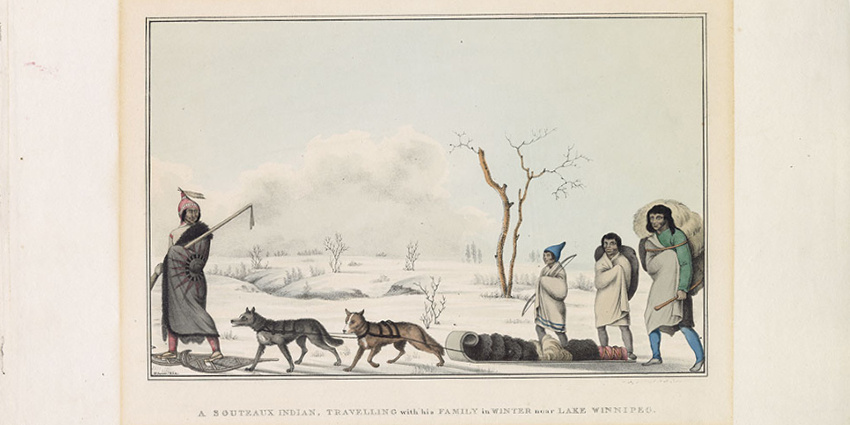What’s the Difference Between Historic and Modern Treaties?
We have received requests to provide a description of the difference between historic and modern treaties. This article attempts to answer the...

Treaties are negotiated agreements that define the rights, responsibilities and relationships between Indigenous groups and federal and provincial governments. The treaty system was a means by which the Crown gained sovereignty, without military intervention, over the West in order to open it up for settlers. In return for pledging allegiance to the Crown the chiefs and their communities received promises (each Treaty is different) in exchange for the majority of their land. The Constitution Act 1982 reaffirmed and upheld all historic treaties made between 1701 and 1923, as well as modern land claim settlements.
The language in Treaty Number 6, signed in 1876 by the Plains and Woods Cree, is quite revealing as to the paternalistic attitude of the Crown. Treaty Number 6 is the only numbered treaty with a healthcare clause. It states “That in the event hereafter of the Indians comprised within this treaty being overtaken by any pestilence, or by a general famine, the Queen, on being satisfied and certified thereof by Her Indian Agent or Agents, will grant to the Indians assistance of such character and to such extent as Her Chief Superintendent of Indian Affairs shall deem necessary and sufficient to relieve the Indians from the calamity that shall have befallen them.” [1]
It also includes this passage relating to education:
And further, Her Majesty agrees to maintain schools for instruction in such reserves hereby made as to Her Government of the Dominion of Canada may seem advisable, whenever the Indians of the reserve shall desire it. [2]
And this in relation to “good conduct”:
Provided, however, that Her Majesty reserves the right to deal with any settlers within the bounds of any lands reserved for any Band as She shall deem fit, and also that the aforesaid reserves of land, or any interest therein, may be sold or otherwise disposed of by Her Majesty's Government for the use and benefit of the said Indians entitled thereto, with their consent first had and obtained; and with a view to show the satisfaction of Her Majesty with the behaviour and good conduct of Her Indians, She hereby, through Her Commissioners, makes them a present of twelve dollars for each man, woman and child belonging to the Bands here represented, in extinguishment of all claims heretofore preferred. [3]
And this in relation to “intoxicating liquor”:
Her Majesty further agrees with Her said Indians that within the boundary of Indian reserves, until otherwise determined by Her Government of the Dominion of Canada, no intoxicating liquor shall be allowed to be introduced or sold, and all laws now in force, or hereafter to be enacted, to preserve Her Indian subjects inhabiting the reserves or living elsewhere within Her North-west Territories from the evil influence of the use of intoxicating liquors, shall be strictly enforced. [4]
The topic of treaties is extensive - we don't want to overwhelm you but do want to provide some facts that we hope will inspire you to do some research or, better yet, enrol in our Working Effectively With Indigenous Peoples® training. It's a combination of our Indigenous Awareness and Indigenous Relations courses where you can learn more about the topics you have just read.
94. We call upon the Government of Canada to replace the Oath of Citizenship with the following: I swear (or affirm) that I will be faithful and bear true allegiance to Her Majesty Queen Elizabeth II, Queen of Canada, Her Heirs and Successors, and that I will faithfully observe the laws of Canada including Treaties with Indigenous Peoples, and fulfill my duties as a Canadian citizen. [6]
If these treaty facts piqued your interest, here's an interview with James Wilson, Treaty Commissioner of Manitoba on The Importance of Treaty Education.
[1] Copy of Treaty No. 6 between Her Majesty the Queen and the Plain and Wood Cree Indians and other Tribes of Indians at Fort Carlton, Fort Pitt and Battle River with Adhesions; Aboriginal Affairs and Northern Development website
[2] ibid
[3] ibid
[4] ibid
[5] Ontario Ministry of Aboriginal Affairs website
[6] Truth and Reconciliation Commission 94 Calls-to-Action
Featured photo: Wikipedia

We have received requests to provide a description of the difference between historic and modern treaties. This article attempts to answer the...

The history of extinguishment of First Nation title has its roots in old or historic treaties as shown from the excerpt below from Treaty 3, between...

This is a brief look at an extraordinary, passionate, grassroots Indigenous movement in Canadian history that altered the direction of the...